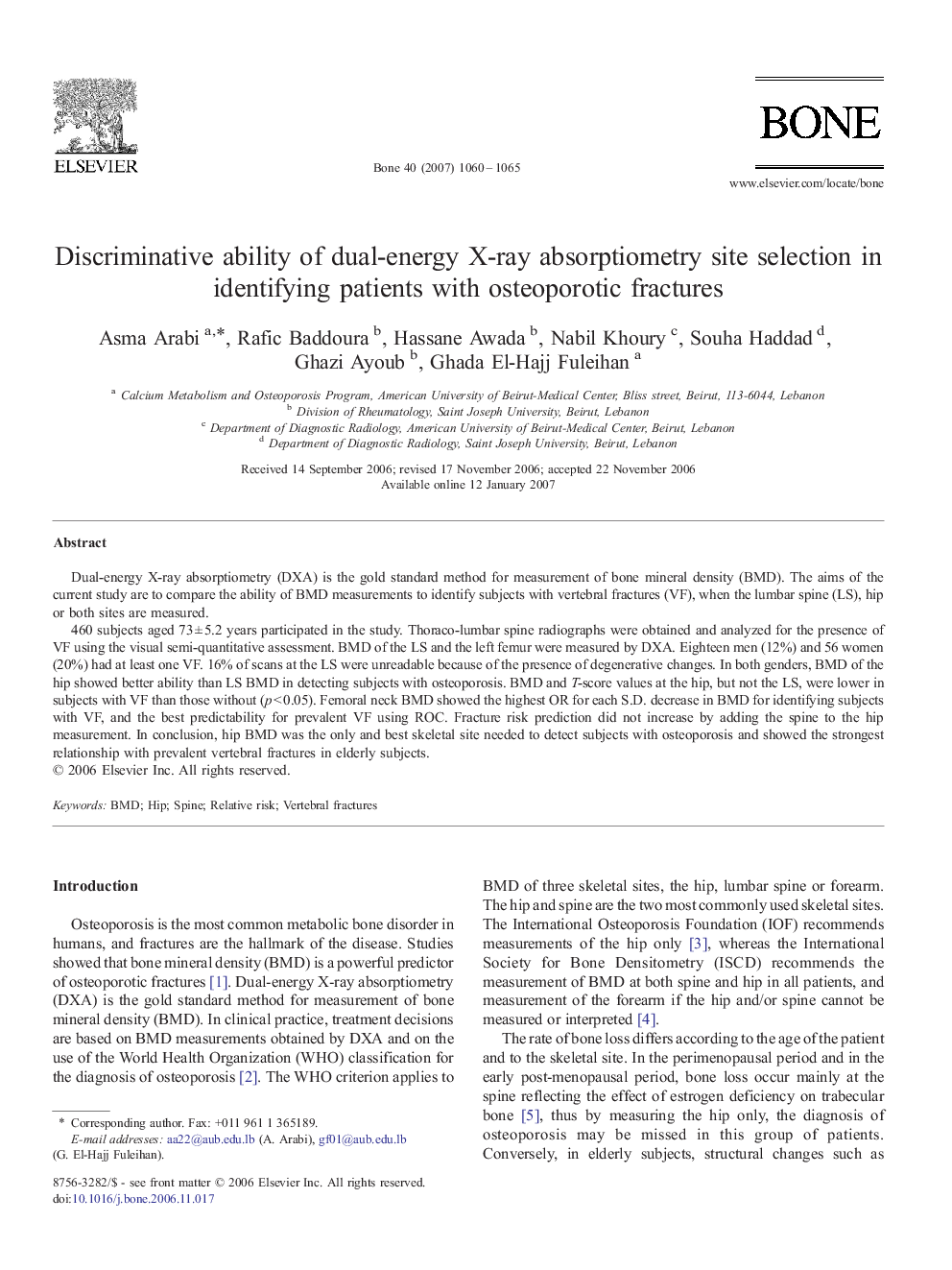| کد مقاله | کد نشریه | سال انتشار | مقاله انگلیسی | نسخه تمام متن |
|---|---|---|---|---|
| 2782147 | 1153344 | 2007 | 6 صفحه PDF | دانلود رایگان |

Dual-energy X-ray absorptiometry (DXA) is the gold standard method for measurement of bone mineral density (BMD). The aims of the current study are to compare the ability of BMD measurements to identify subjects with vertebral fractures (VF), when the lumbar spine (LS), hip or both sites are measured.460 subjects aged 73 ± 5.2 years participated in the study. Thoraco-lumbar spine radiographs were obtained and analyzed for the presence of VF using the visual semi-quantitative assessment. BMD of the LS and the left femur were measured by DXA. Eighteen men (12%) and 56 women (20%) had at least one VF. 16% of scans at the LS were unreadable because of the presence of degenerative changes. In both genders, BMD of the hip showed better ability than LS BMD in detecting subjects with osteoporosis. BMD and T-score values at the hip, but not the LS, were lower in subjects with VF than those without (p < 0.05). Femoral neck BMD showed the highest OR for each S.D. decrease in BMD for identifying subjects with VF, and the best predictability for prevalent VF using ROC. Fracture risk prediction did not increase by adding the spine to the hip measurement. In conclusion, hip BMD was the only and best skeletal site needed to detect subjects with osteoporosis and showed the strongest relationship with prevalent vertebral fractures in elderly subjects.
Journal: Bone - Volume 40, Issue 4, April 2007, Pages 1060–1065